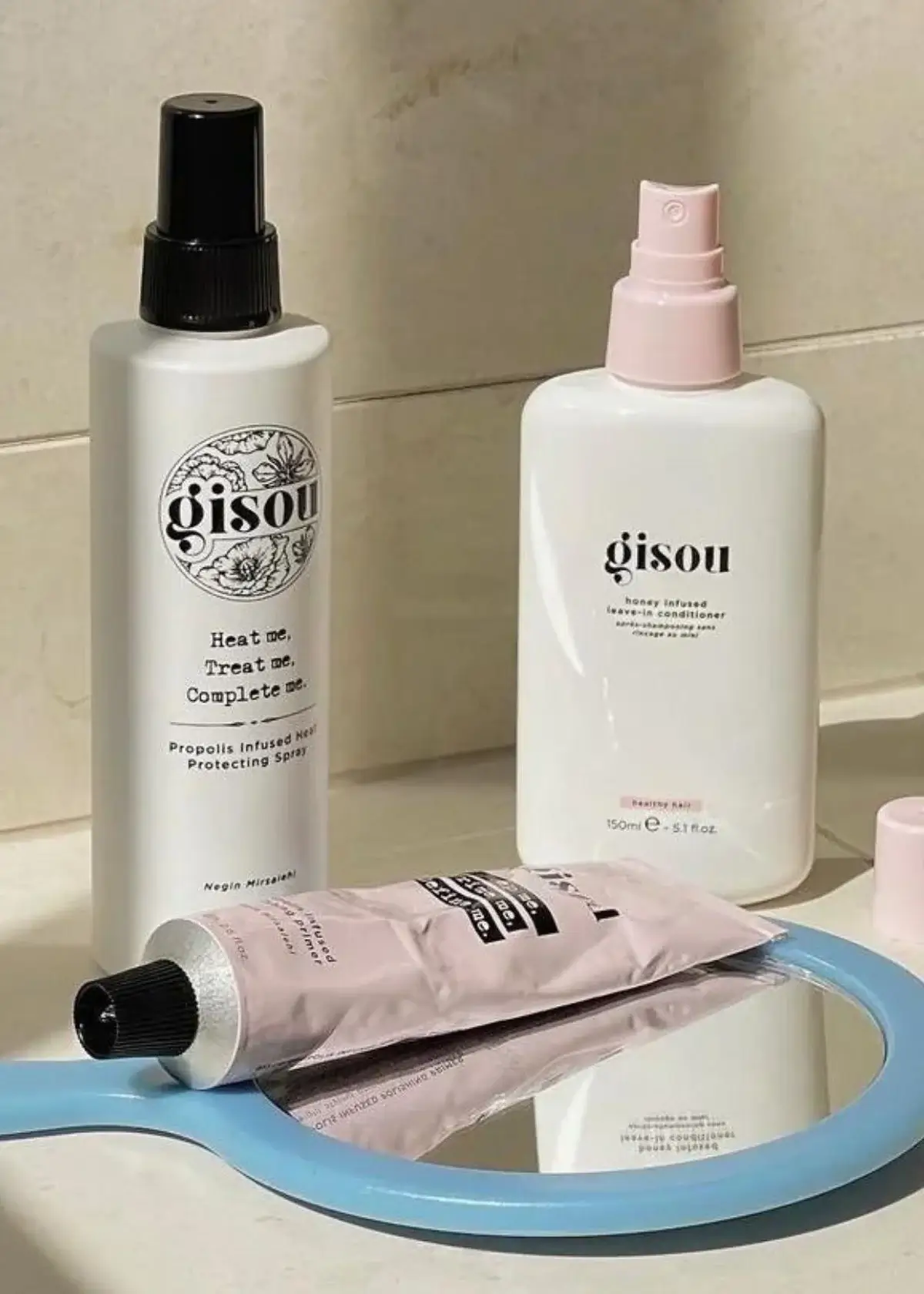As a curly-haired person, you know how difficult it is to maintain your curls. A good hairstyle needs good maintenance, including protecting your hair from the tools we use every day, like flat irons and hair dryers. Those tools can cause serious damage to your hair if they're used without proper preparation. That's why it's essential to use a heat protectant. Though many heat protectant products are on the market, not all are effective, especially for natural hair. This post will share some of the best natural heat protectant methods perfect for us curly-haired ladies.
Coconut oil
Coconut oil is a miracle worker for curly hair. It is often used as a natural hair conditioner but also works wonders when used as a heat protectant. All you need to do is to apply a small amount of coconut oil to your hair before using any heat tools. This will protect your hair from heat, and it also works as a natural hair moisturizer.
Aloe Vera
Aloe Vera is another natural remedy that can keep your hair looking healthy and shiny. This ingredient is known for its healing properties, but it also serves as a natural heat protectant. The gel from Aloe Vera can be applied to your hair to protect your curls from heat. Simply apply a small amount of the gel before using any heat tools, and your hair will thank you later.
Shea butter
Shea butter is an excellent option for a natural heat protectant. Not only does it protect your hair from heat, but it also smooths out your curls, keeping them healthy and shining. To use shea butter as a heat protectant, simply apply a small amount on your hair before using any heat tools.
Argan oil
Argan oil is often used as a hair oil but can also serve as a natural heat protectant. It nourishes your hair, protecting it from heat damage while making it shiny and healthy. Simply apply a small amount on your hair and comb through before using any heat tools.
Grapeseed oil
Grapeseed oil is another natural ingredient that can save your curly hair from heat damage. It helps flatten your hair cuticles, making your curls look smoother and shinier. To use grapeseed oil as a heat protectant, apply a small amount to your hair before using heat tools.
Heat protection is crucial for curly hair, and natural ingredients offer a great solution. When choosing a heat protectant, look for natural ingredients to moisturize and nourish your hair while protecting it from heat damage. You don't need a pricey product to protect your hair. The natural remedies we've shared in this post are significant options that are affordable and effective. So why not start protecting your curls naturally? Try these natural heat protectants and see how they work for you.
Calling all fashion lovers! We know that the key to locking in the perfect curly locks is finding the best heat protectant for curly hair, but the search can be overwhelming. Fear not, because we've researched you and teamed up with fashion editors to bring you the ultimate list of heat protectants to keep your curls looking fierce and fabulous. Finally, you can achieve that salon-worthy style without damaging your gorgeous strands. So go ahead and click that link to find your next favorite heat protectant for curly hair - your curls will thank you!
What are the different types of heat protectants available for curly hair?
Heat protectants for curly hair come in various forms, including sprays, serums, creams, and oils. Some are designed specifically for curly hair, adding moisture and frizz control. Look for products with ingredients like silicones, keratin, or natural oils, (find the best drugstore hair oil here.) which form a protective barrier on the hair shaft. These protectants shield your curls from the damaging effects of heat styling tools, reducing the risk of dryness and breakage. Choose a heat protectant that suits your hair type and texture to ensure maximum protection and maintain your curly locks' health and vibrancy.

What is the frequency of heat styling tools with a heat protectant?
Limiting heat styling to 1-2 times per week minimizes damage. Even with a heat protectant, excessive heat exposure can still lead to dryness and weakened curls. Instead, opt for heatless styling methods in between, such as air-drying, twist-outs, or braid-outs. These styles protect your curls and add versatility to your look. Remember, proper hair care and occasional deep conditioning treatments are crucial for maintaining healthy, bouncy curls. Embrace your natural texture and use heat styling sparingly to preserve your hair's integrity and overall curl pattern.

What are the potential side effects of not using a heat protectant on curly hair?
Preceding a heat protectant when using hot styling tools can have several detrimental effects on curly hair. The high temperatures can cause moisture loss and protein damage, leaving your curls dry, brittle, and more susceptible to breakage. The cuticles become prone to fraying without a protective barrier, increasing frizz and reducing curl definition. Over time, this can lead to irreversible damage, changing your natural curl pattern. By consistently using a heat protectant, you safeguard your curls from harm, ensuring they remain healthy, resilient, and full of life.

How can I prevent product buildup using heat protectants in my curly hair?
To prevent product buildup, choose a heat protectant that is lightweight and specifically formulated for curly hair. Avoid products containing heavy silicones and waxes, as they can accumulate on the hair shaft and weigh down your curls. Besides, use the recommended amount of heat protectant and apply it evenly through your hair. Regularly clarify your hair using a sulfate-free shampoo to remove any residue and maintain a clean scalp. Embrace a simple hair care routine, and if you need to refresh your curls between washes, use a water-based spray or leave-in conditioner.

How does a heat protectant retain moisture in curly hair during heat styling?
A heat protectant is a barrier between your curly hair and the high temperatures of styling tools. When applied, it creates a protective shield around the hair shaft, reducing moisture loss during heat styling. By preventing excessive water evaporation, the heat protectant helps retain the natural moisture of your curls, keeping them hydrated and less prone to dryness. This moisture-retaining property is especially crucial for curly hair, as it tends to be naturally drier due to its structure. With a heat protectant in place, you can achieve your desired style without compromising your curls' health and moisture balance.
Should I apply a heat protectant on the entire length of my curly hair or just the ends?
Applying the heat protectant throughout the entire length of your curly hair, from roots to ends, is recommended for optimal protection. While the ends are more susceptible to damage due to their older and more exposed nature, the rest of the hair benefits from the heat protectant's moisture-sealing properties. Applying the product evenly ensures that every strand receives adequate protection from the heat, reducing the risk of split ends and maintaining overall hair health. Remember to use the appropriate amount of heat protectant based on your hair's length and thickness to achieve the best results.







